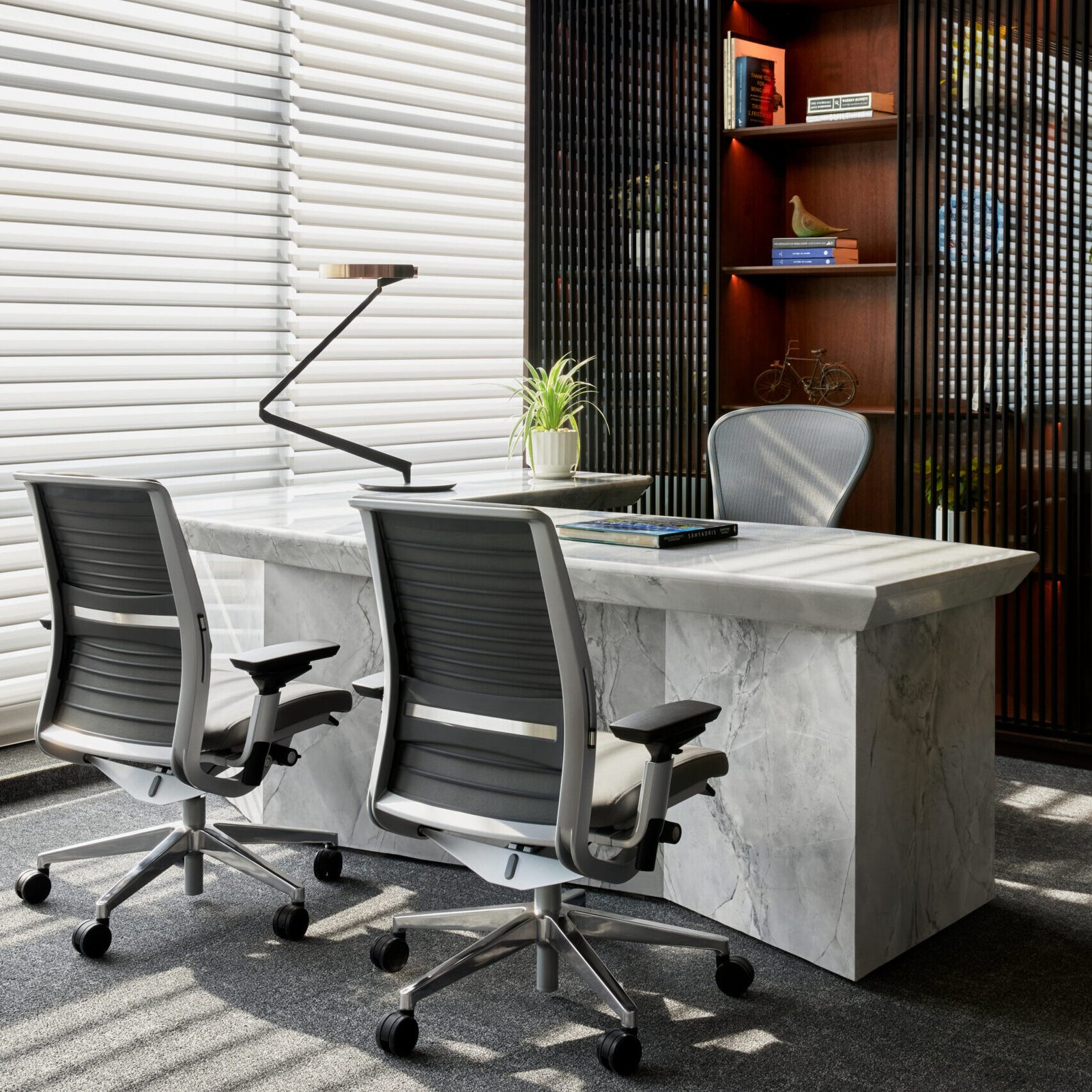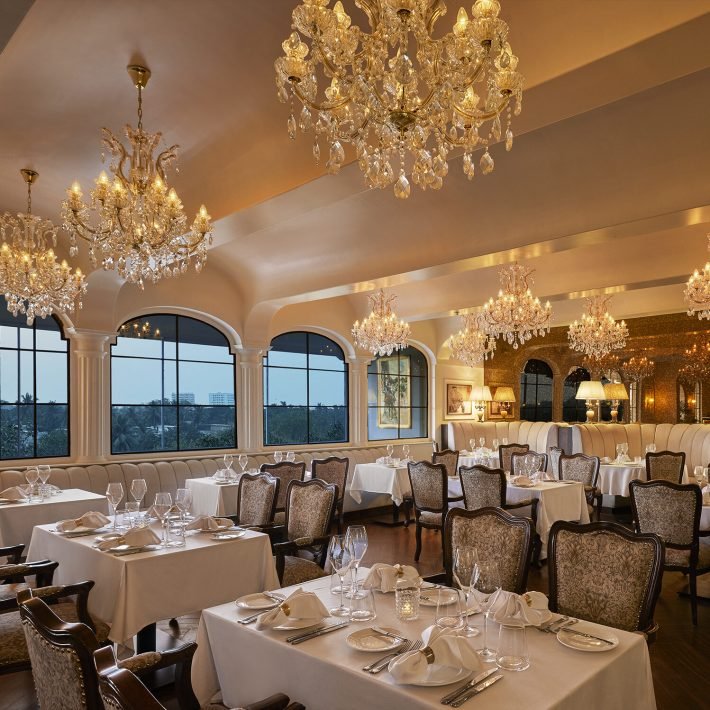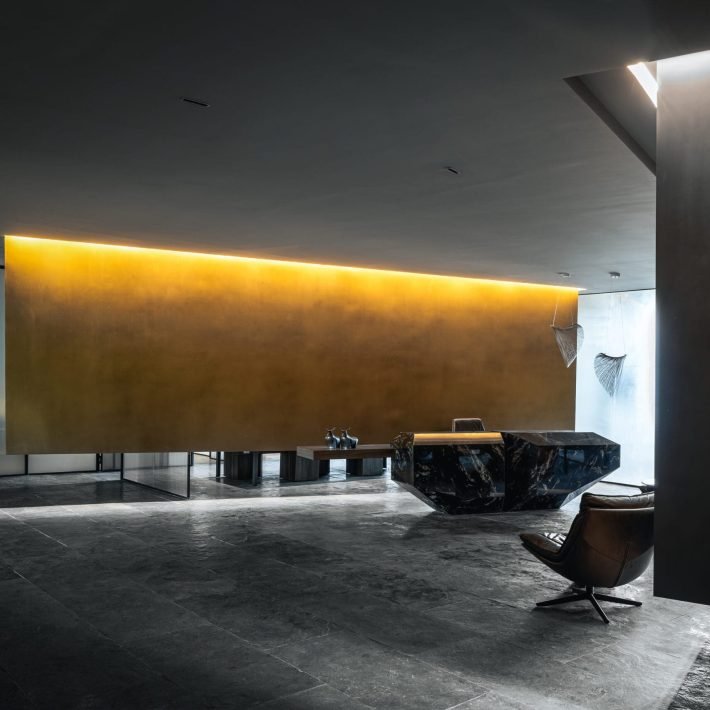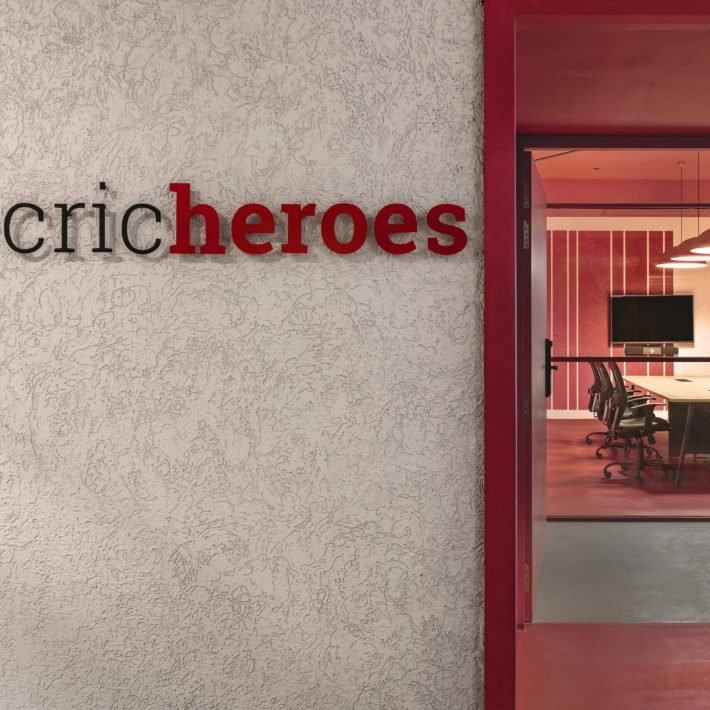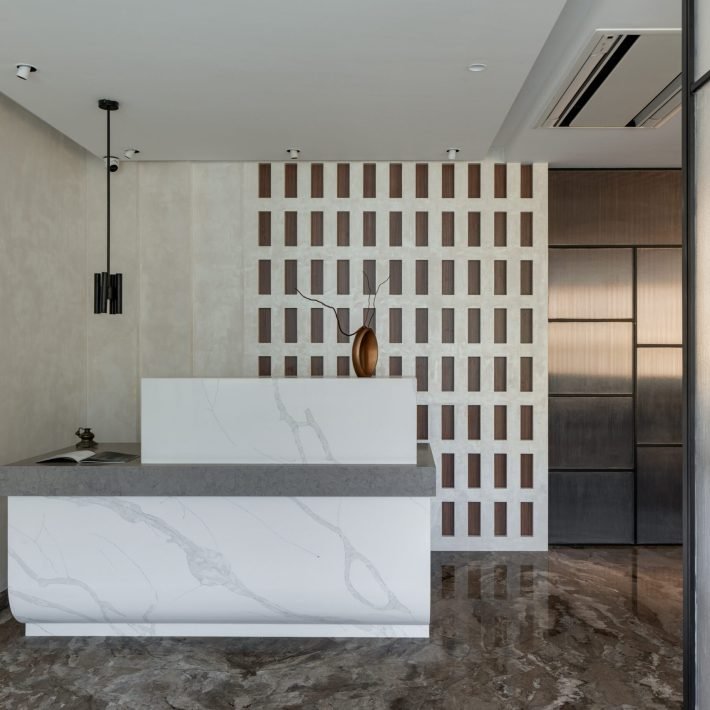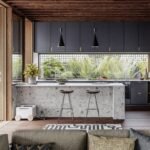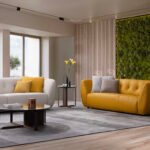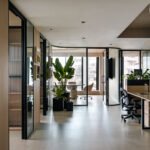Ar. Apoorva Shroff,designs a office for Prestige Group in Mumbai that is a harmonious confluence of the formality of the space and the informality of the materials.
When radically aspirational real estate developers meet articulate-minded architectural designers to design their office, it brings forth the genesis of contemporary design solutions demonstrating a refreshing take on office design. One such project is the Prestige Group’s Mumbai office designed by Lyth Design.
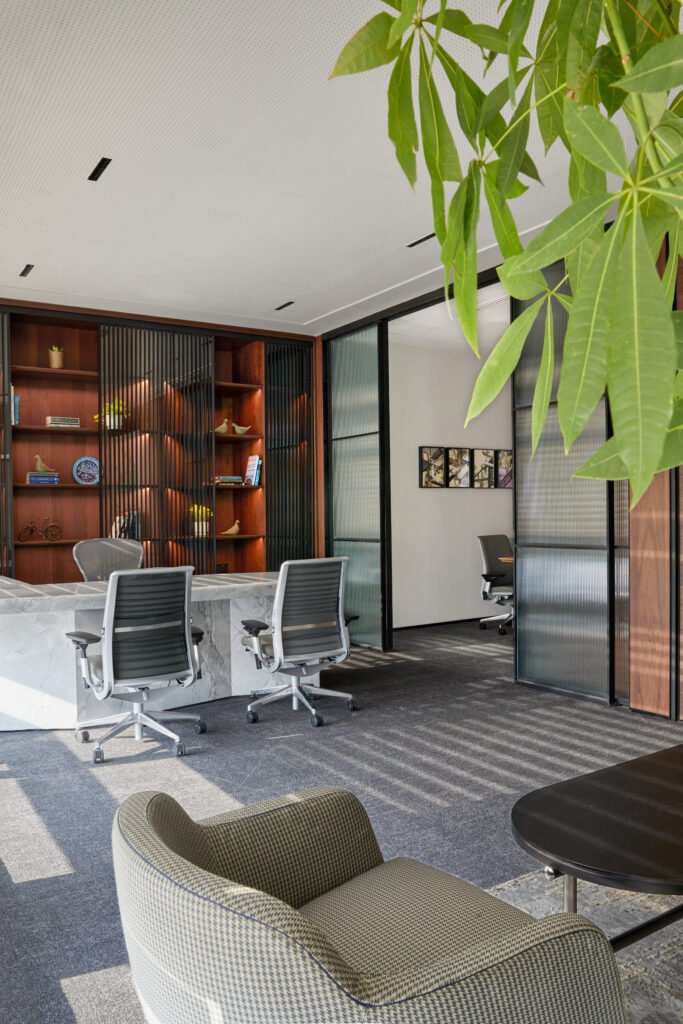
Over the last decade, the Prestige Group has established itself as one of the pioneers of real estate development in India. At the onset of January 2022, they made an undisputed decision to land their falcon brand in Mumbai. The clients had a severely straightforward brief. They wanted the office space to resonate elegance without being disturbingly loud. Designed with a fusion of timelessness while staying relevantly trendy, they wanted this office to exemplify the confluence of a formal yet intimate space, hence truly being one of a kind.

Spanning across 15,000 sq ft, the site is located inside Godrej BKC and is encompassed by a multitude of edifices such as the Jio World Convention Centre, US Consulate General and Canara Bank Treasury Wing. Ar. Apoorva Shroff, Founder, Lyth Design, skillfully made use of informal materials like exposed bricks, reinforcement bars and cement finishes which lends a unique identity to the building.

Following her reliable thumb rule strategy for planning offices, the external meeting rooms, visitor lounges, boardroom and public restrooms had a well-pronounced distinction from the private office spaces. The open floor plan and colossal high ceilings make way to script an impactful design that reflects Prestige’s brand ethos. The floor-to-ceiling glass facades facing both, east and west directions let the site easily avail the rising as well as setting sun with unparalleled views of Mumbai mangroves.
“Anchored by a theme of parallels, the aesthetic and structural route chosen for the reception was one with a veneer backdrop and metal pinstripes seemingly pulled from the office space. This concept of fine lines provides controlled fluidity as it parametrically curves and forms the top of the reception desk, leading to an interesting weave of vertical and horizontal lines. The cold grey marble flooring is offsetted by the warmth of plant-adorned walls, thus humanising the office atmosphere. The visitors are met with two wide conduits of corridors abutting the reception, one which is access controlled and leads to the internal private spaces, while the other segues into the visitor lounges and is embellished by copper medallions that beautifully narrate the story of Prestige’s legacy, ultimately culminating into a glorious Ficus tree.” explains Apoorva Shroff.

She further adds, “Meeting rooms are identified with various falcon names; for instance, we have the Peregrine boardroom, which is a twenty-seater. In keeping with the design intent of stripes, the boardroom follows suit with a formal matte black fluted wall cladding. These crisp lines are broken by a laser-cut veneer interpretation of a falcon, demanding singular attention. The room is infused with elements of luxury while underlining the importance of a clean design. The mighty marble table and the pinstriped background wall rub shoulders with the bronze-finish oval hanging light, bearing grace of supreme grandeur. To top it off, this exclusivity is accompanied by equally impressive technology to attain privacy with the press of a button that results in frosting up the smart glass partitions. Concrete light loops, acoustic ceiling panels and switchable glass partitions are the common threads linking all the other falcon meeting rooms. A strip of metal around the edges of each wooden table top becomes a common denominator for the grey visual expression flowing through these rooms.”
Conversely, the visitor lounges are much softer and laden with curvilinear forms in its walls, ceiling and furniture details, thus creating an intimate setting. With a warm wooden finish encasing three sides, a fiddle leaf fig plant sits deftly in the corner, enhancing the thrall of the space while being a comfortable silent participant in conversations.

The main office area has open workstations with cabins lining against the external exposed brick façade, which permeates into the narrative voiced by the client. However, a clever break in the same encourages the penetration of the west sun all the way across into the darkest of the office corners. The perfect ancillary to this area is a reinforcement bar wall assembly, creeping with resplendent money plants which ultimately forms a gentle demarcation to the workstations. An attempt is made to create a nuanced balance with the introduction of supplementary potted plants to subdue the mightiness of two hefty columns falling within the office space.
Providing a changing canvas is the tiffin room, in sync with its innate informality and adorning an aesthetic of vivacious tile flooring alongside a green wall that strongly evokes casual conversations. A metal island assumes a central place and functionally serves all requirements of a congregatory cafeteria.
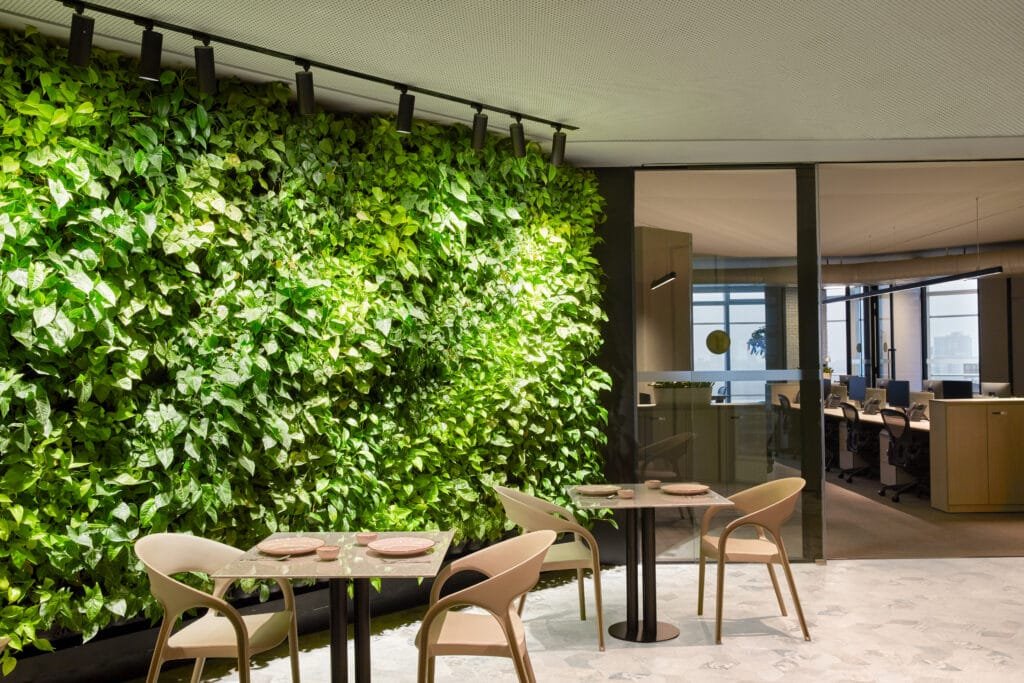
The design of the office at large bears the weight of the client’s ideologies and the designer’s creative expressions. It poses to be a perfect medley of mindful circulation emulsified with a structured thought-footprint, with the potential of making one’s workday as exuberant as the space they are inhabiting. The unique qualities of the materials used represent the brand in a playful yet sincere manner, thus forging an atypical workspace that’s truly honest in every aspect of design.


